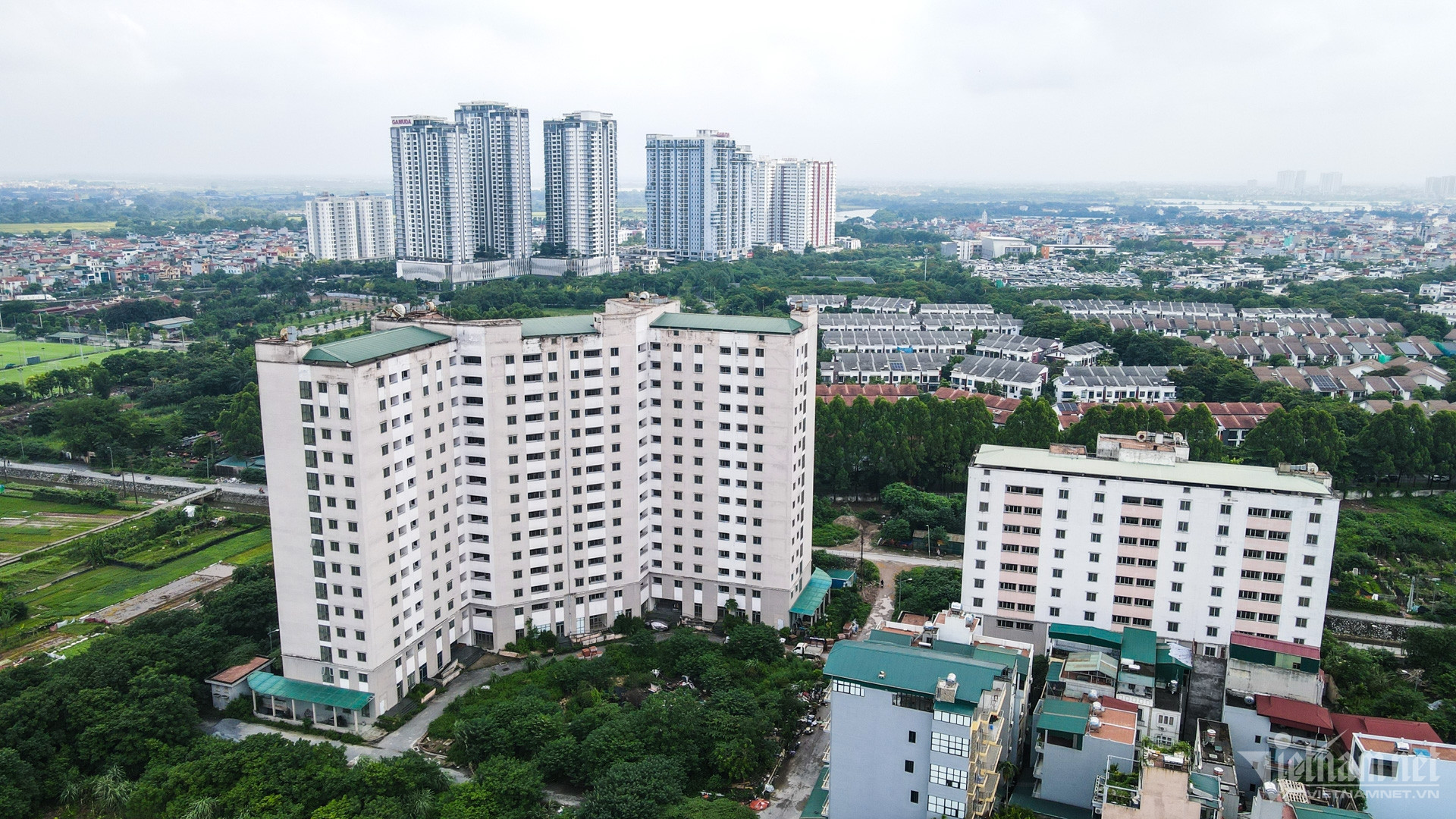
Le Quang Huy, Deputy General Director of BIC Vietnam JSC, speaking at a seminar on “Realizing the dream of social housing,” held on May 30, said this is one of six social housing projects under construction in Hanoi, developed by a joint venture of Him Lam Thu Do JSC and BIC Vietnam JSC.
Huy noted that previously realtors helped buyers in person, but it was time consuming and resource intensive. He hopes that new regulations are set up that allow the collection and approval of registrations online.
“The current manual process is inefficient. Adopting technology would reduce direct contact with customers, minimizing potential issues,” Huy said.
Although the project’s sale price has not been announced, it has attracted significant interest. The project’s website recorded nearly 70,000 visits, with numbers still rising, signaling high competition in the upcoming sale.
Regarding social housing prices, Nguyen Van Dinh, Vice President of the Vietnam Real Estate Association, stated that with exemptions on land use fees, investor appointment, and streamlined licensing procedures, social housing priced below VND25 million/sqm is only feasible in Hanoi’s outskirts. In central areas, prices would be no less than VND35 million/sqm.
He urged careful consideration of price caps for social housing.
Speaking about available land, Le Van Binh, Deputy Director of the Land Management Department under the Ministry of Agriculture and Environment, noted that under the 2024 Land Law, the central government focuses on controlling critical land types, such as rice fields, forests, and defense-security land.
Land development and planning are undertaken by local authorities.
However, Prime Minister Pham Minh Chinh has directed that social housing should not mean housing located in undesirable locations. There must be sufficient access to technical and social infrastructure and transportation.
To ensure convenient living, Binh proposed using surplus public land from state agency headquarters for social housing, because urban central land is now scarce. If locations for social housing are far from city centers, transport must be convenient for residents to travel to central areas to work.
Hanoi to build new 3,000 social housing units
Ha Quang Hung, Deputy Director of the Housing and Real Estate Market Management Department under the Ministry of Construction, said that among the six social housing projects under construction in Hanoi, four are likely to be completed in 2025.
These include the Kim Hoa project (MeLinh District, 720 units), Uy No project (Dong Anh District, 466 units), Kim Chung project (Dong Anh District, 1,174 units), and a social housing project in Thanh Lam, Dai Thinh urban area (Me Linh District, 500 units).
In total, over 3,000 units could be available next year, against the city’s target of 4,670 units.
The remaining two projects, Thuong Thanh and Ha Dinh (Thanh Tri District), are unlikely to be completed in 2025. Hung noted that both projects are still at the basement construction stage, with designs including 24 floors and one basement.
“If developers accelerate construction, they might complete the rough structure by 2025,” Hung said.
At the seminar, Deputy Minister of Construction Nguyen Van Sinh said the 2025 social housing target is about 100,000 units. Since the start of the year, 30,000 units have been initiated, a positive sign.
However, some localities like Yen Bai, Nam Dinh, Ninh Binh, and Vinh Long have yet to start any social housing projects.
To boost supply, Sinh noted that although the legal framework is nearly complete, stronger local government action is needed.
On May 29, the National Assembly passed a resolution on special mechanisms for social housing development, introducing policies like establishing a non-profit national housing fund, designating investors for social housing projects, simplifying planning and investment procedures, allowing developers to set sale prices, and conducting post-audits.
These pilot mechanisms take effect from June 1, with government guidance effective from July 1.
After the merger of provinces and cities, in cases where residents already own housing, the provincial People's Committee will specify conditions for purchasing social housing based on the distance and travel time from home to the workplace, according to Hung.
After administrative reorganization, the distance from one end of a province to the other may significantly increase. Many officials and workers must travel 100-200 kilometers from their residences to workplaces.
Meanwhile, some rural workers employed in distant urban areas need to buy or lease-purchase social housing, but do not meet current eligibility criteria.
In addition, after the administrative mergers, many who previously qualified for social housing may no longer be eligible, despite actual unchanged needs.
Therefore, provincial People's Committee will set specific conditions for purchasing social housing. The distance could be 15-20km or 30-50km, depending on local regulations.
Hong Khanh